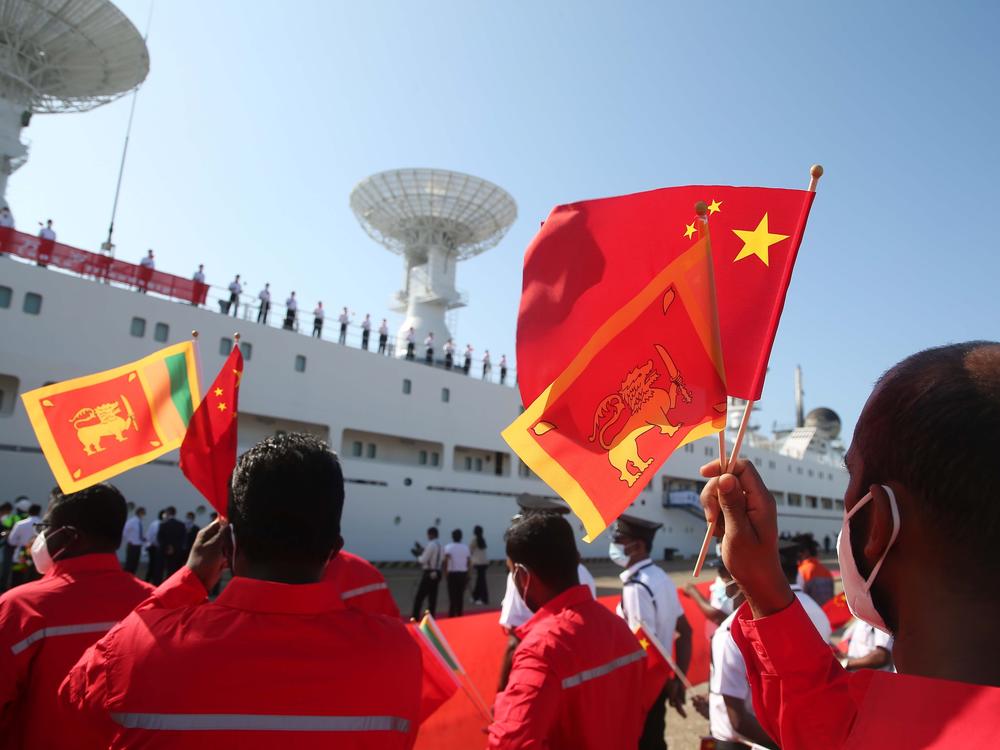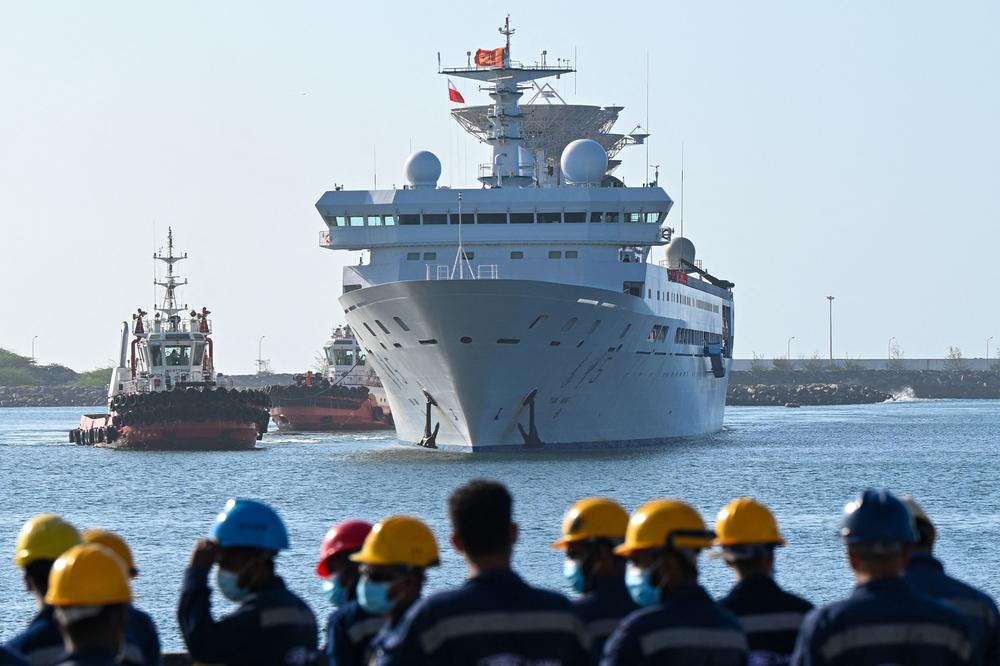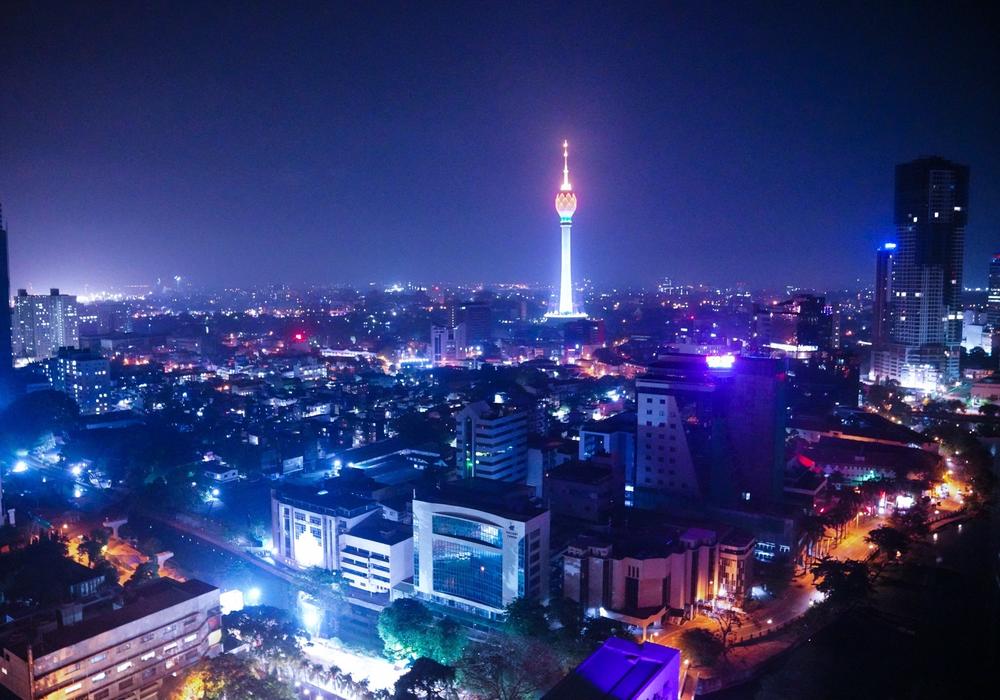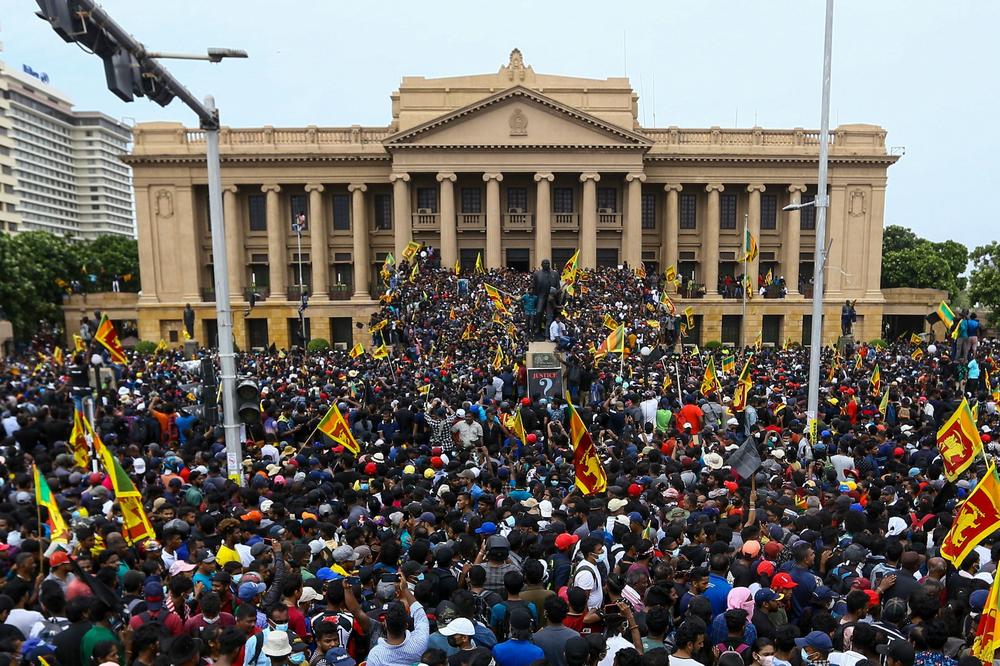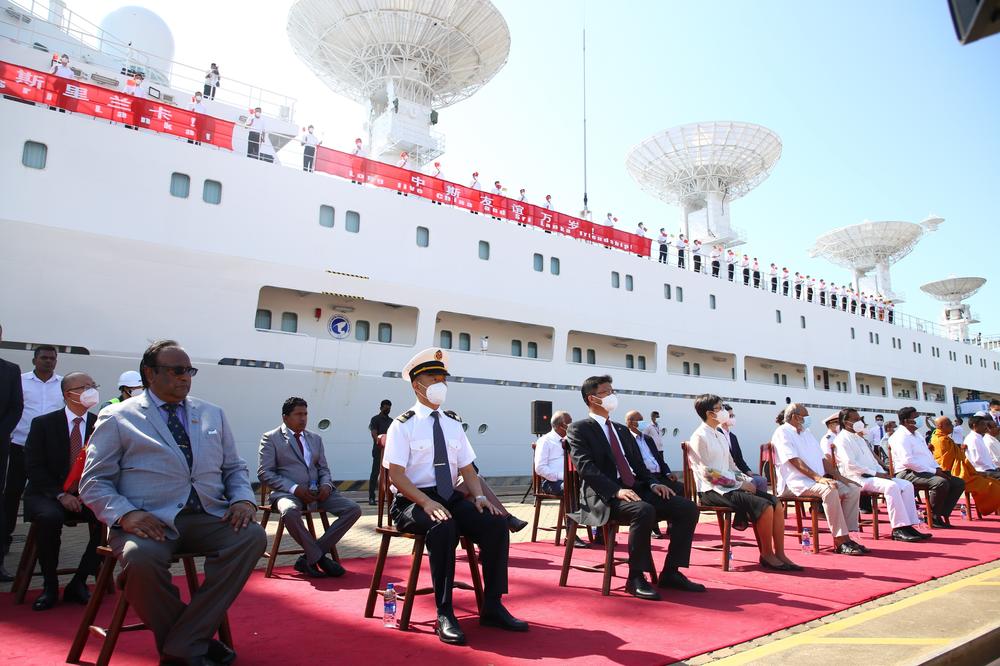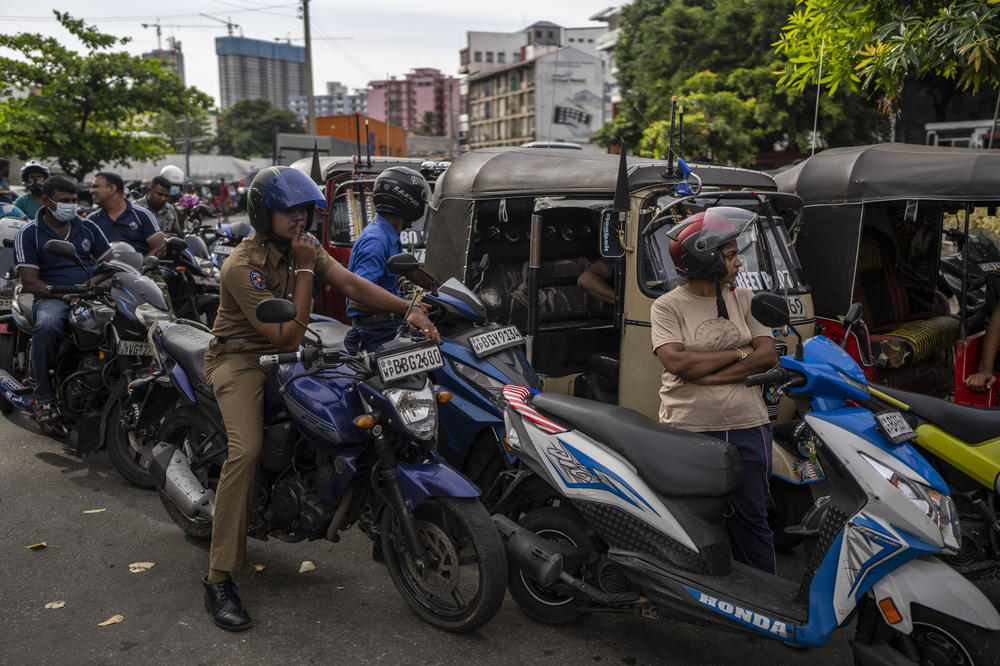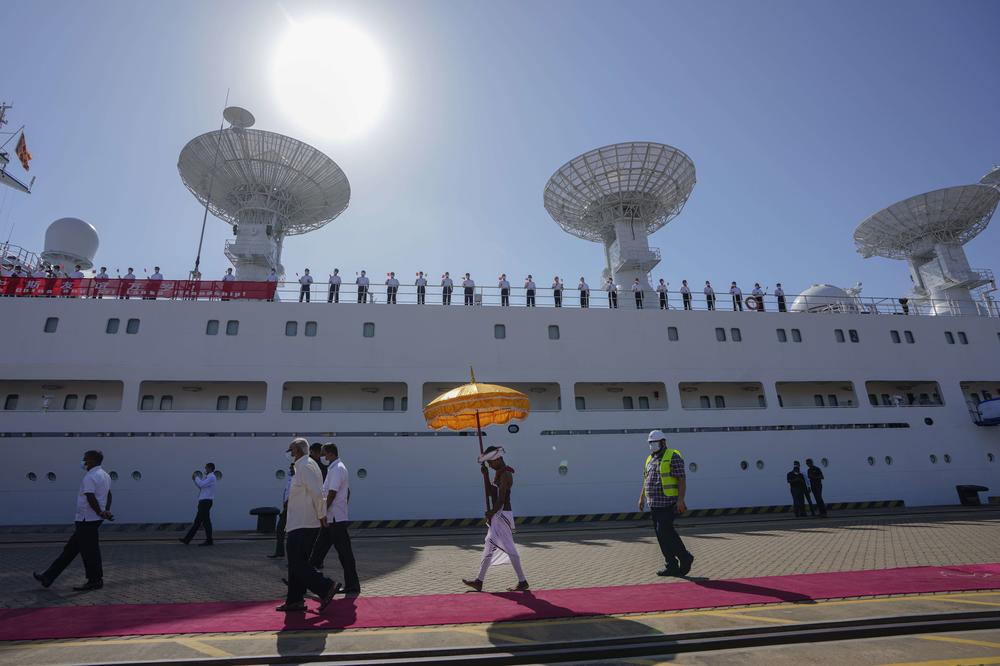Section Branding
Header Content
Why a Chinese ship's arrival in Sri Lanka has caused alarm in India and the West
Primary Content
COLOMBO, Sri Lanka — It all began 20 years ago, when China loaned Sri Lanka more than $1 billion to build a fancy new port — what would become its second-largest — on its southern coast.
The Hambantota port, with its strategic location near busy Indian Ocean shipping routes, was touted as good for Sri Lankan commerce. But it wasn't profitable, and the government defaulted on those Chinese loans.
Then China foreclosed, taking over the port's operations in 2017 on a 99-year lease.
Beijing's critics have long offered up Hambantota as the classic example of what they call a Chinese debt trap. Now, with Sri Lanka bankrupt and politically unstable, they're flagging it as a worrying example of how China might use that infrastructure for military purposes.
Their fears grew this week, when a Chinese survey ship docked at Hambantota. Sri Lanka and China call it a scientific research vessel, which will stay through Aug. 22 to resupply. But foreign security experts call it a Chinese naval ship that's been used in the past to track satellites and missiles.
The ship's arrival on Tuesday set off alarm bells in the West and in neighboring India, which has tense relations with Beijing. Critics say whatever China does in Hambantota with this ship may signal what it eventually plans to do with all the ports, highways, bridges and other infrastructure it's built around the world in recent decades — in one of the biggest construction efforts in human history. They fear this colossal network of infrastructure could be converted into an unprecedented network of military bases, occupying parts of countries where China has never had overseas army bases before.
Sri Lanka has been transformed by Chinese construction
Chinese companies, most of them state-owned, have built ports, power stations, an airport — even a giant lotus-shaped tourist tower — across Sri Lanka.
At first, these projects were hailed as symbols of Sri Lanka's development, says Shreen Sarour, a human rights activist. Many of the projects now look like "white elephants," she says — useless to the now-bankrupt Sri Lankan government, but possibly useful to China. They could be used to interfere with or control global trade, or possibly even as launchpads for military aggression, Sarour believes.
Sri Lanka has been one of the countries hardest hit by inflation and rising energy prices this year. In May, the government defaulted on foreign debt payments. By July, inflation had shot up to 60%. There are rolling blackouts, food shortages and fuel rationing.
The economic crisis sparked a political one: Protesters filled the streets, calling for the ouster of President Gotabaya Rajapaksa. Last month, he fled the country and resigned. A new president is now in his place.
Many Sri Lankans accuse Rajapaksa and his brother, another former president, of running the economy into the ground. Protesters are calling for scrutiny of everything they did. One of the biggest things they did was to sign opaque investment deals with China, including oversight of the Chinese construction at Hambantota.
"This is economic colonialism," says W. Jude Namal Fernando, a Sri Lankan fisherman turned activist who successfully lobbied a Chinese construction company to compensate fishermen whose land was eroded because of Chinese dredging north of Colombo. "China exploits our country, but it's our leaders who let them do it."
China says its ship is on a scientific mission, not a military one
China and Sri Lanka have both sought to allay concerns of those like Fernando and Sarour, as well as foreign governments like India's, who worry this Chinese ship's arrival could signal the start of the militarization of Chinese infrastructure in Sri Lanka.
"I would like to reiterate that the marine scientific research conducted by the research ship Yuan Wang 5 conforms to international law and international common practice, and will not affect the security and economic interests of any country," China's Foreign Ministry spokesperson Wang Wenbin said a briefing Monday.
When the ship docked Tuesday, the Chinese Embassy threw a welcome ceremony. Workers stood at attention, waving Chinese and Sri Lankan flags, and the Chinese ambassador extolled the two countries "outstanding friendship."
But Indian media reported that some senior Sri Lankan officials boycotted the ceremony.
The Chinese ship's arrival in Hambantota was reportedly delayed amid objections from India, which shares a more than 2,000-mile disputed border with China, where soldiers clashed two years ago.
On Tuesday, a Sri Lankan government spokesperson, Bandula Gunawardana, told reporters that lots of international ships dock in Sri Lanka and insisted this one is no different — but emphasized that the government is working to ensure there's no "friction" with friendly nations.
Worries about the fight for economic influence over Sri Lanka
On Monday, as the Chinese ship neared Hambantota, India donated a maritime reconnaissance aircraft to Sri Lanka.
As relations fray between China and the world's democracies, including India, Sri Lankans feel caught in the middle, says Sarour.
"People are very worried whether we will be the battlefield between and China's and India's tensions — whether Sri Lanka will be the point where the war will start," she says.
If not a war with weapons, Sarour says, then a war for economic influence.
China is one of Sri Lanka's biggest creditors. Most of the country's debt, however, is held by private banks in the United States and Europe.
India has also been a big lender. Over the past decade, it has extended nearly $2 billion in credit lines to its southern neighbor. But India can't afford to do more. It's dealing with its own inflation crisis.
So Sri Lanka is asking the International Monetary Fund for a bailout. The IMF has said the country's political instability could prolong its delivery.
"Meanwhile, we need money to survive. We need about $800 million per month. Somebody will have to finance it," says W.A. Wijewardena, former deputy governor of Sri Lanka's central bank. "Earlier, that somebody was the European Union, the USA, Japan or India — which has its own problems. So now that somebody? China."
China has deep pockets and is often willing to lend faster than the IMF, with fewer questions asked, Wijewardena says. He predicts his country will take out more Chinese loans and go deeper into debt to Beijing in order to stay afloat until an IMF bailout comes through — likely in January.
Learning Mandarin in Colombo
Not everyone in Sri Lanka sees China's presence as negative.
"The Chinese market is expanding in Sri Lanka! Like, hugely expanding," says Chamath Geethan Perera, a 27-year-old businessman in Colombo.
Perera is learning Mandarin and received a scholarship from the Chinese government to study for a master's degree in Chongquing. After three years there, he landed a job at a Chinese construction company in Colombo.
Sri Lankans need to learn how to communicate with Chinese officials, Perera says.
"If they develop our country with the port city or [other projects], we need to have a clear mind about what they are going to do," he says, referring to Port City Colombo, a Chinese-built complex in the capital. "So we don't need to blame anyone other than ourselves."
Perera says it's easy to blame China or the Rajapaksa brothers for all of Sri Lanka's current problems. It may be harder, he says, for the country's new leaders to avoid the same mistakes.
Susitha Fernando contributed to this story from Colombo.
Copyright 2022 NPR. To see more, visit https://www.npr.org.
